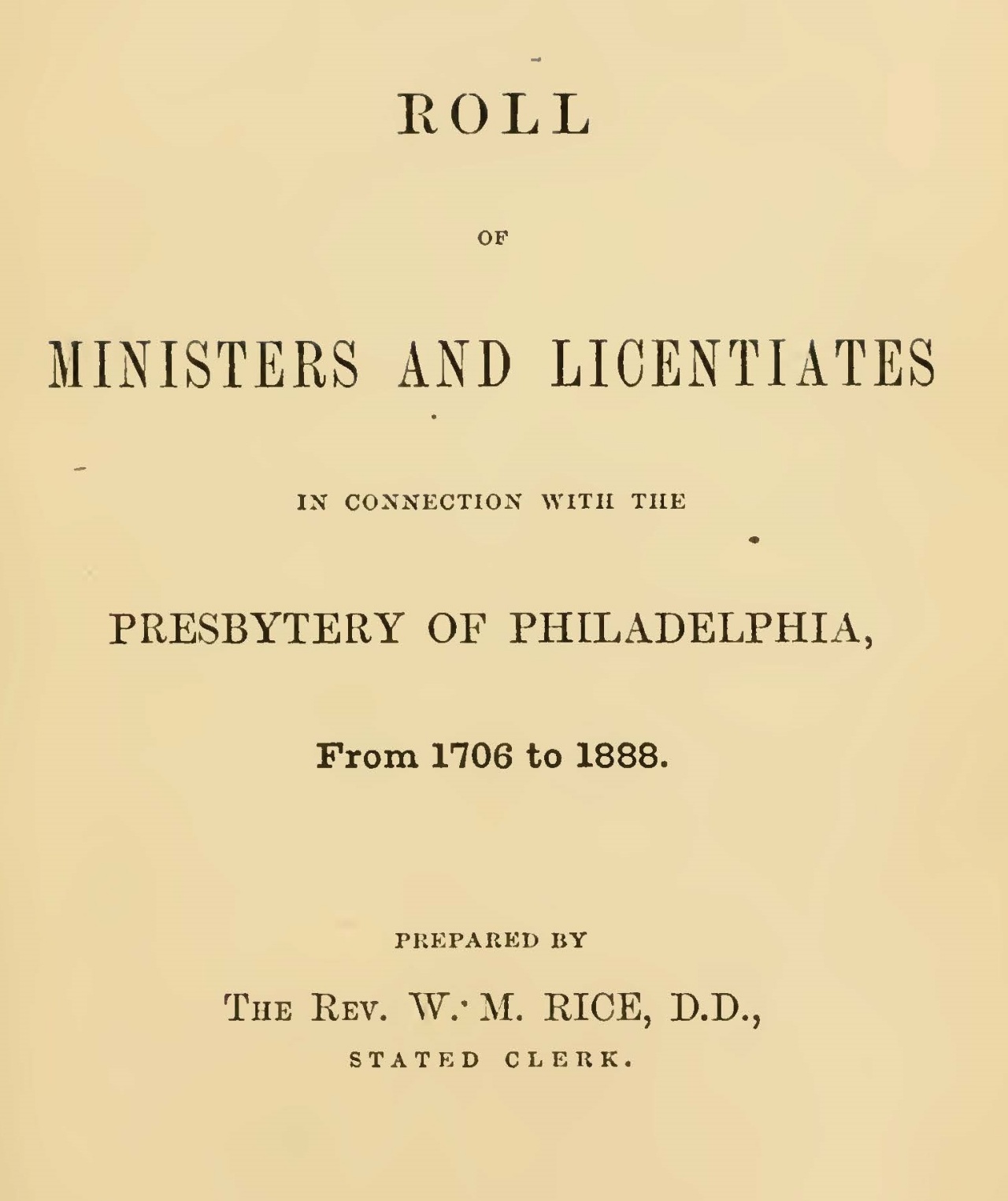(Receive our blog posts in your email by clicking here. If the author links in this post are broken, please visit our Free PDF Library and click on the author’s page directly.)
On Monday, June 1, 1741, a protest authored by Robert Cross and signed by him, along with eleven other ministers and eight ruling elders, was submitted to the Synod of Philadelphia, with Jedediah Andrews serving as Moderator, which led to the great Old Side-New Side split of the colonial American Presbyterian Church. The signers were mostly from the Presbytery of Donegal, representing the Old Side party. D.G. Hart writes* that “This division in American Presbyterianism has been the most difficult one to explain in the history of the church…” The protesters, for one thing, referred to their opponents (the New Side) as “protesting brethren,” which certainly clouds the issue for those removed from the controversy by centuries.
It is not the purpose of this post to attempt to explain the circumstances and motivations of either party, which would require an essay of great length, and the tragic story is told elsewhere in church histories by Charles Hodge, Richard Webster, and others. but simply to alert students of church history to the fact that all twelve ministers who signed the Protestation are now found on Log College Press. As William Tennent’s Log College did play an important role in the events leading up to the 1741 split, it is a matter of great interest to us at Log College Press to read what the Old Side had to say, as well as the New Side.
The twelve ministers who signed included 3 Roberts, 3 Johns and 2 Samuels, and most were born in Ireland:
Robert Cross (1689-1766) - The Protestation’s author served the First Presbyterian Church of Philadelphia alongside Jedediah Andrews.
John Thomson (1690-1753) - Thomson was the author of the 1729 Adopting Act.
Francis Alison (1705-1779) - Alison was a scholar and educator, as well as a leading voice among Old Side presbyters. He preached the opening sermon at the 1758 reunion Synod on “Peace and Union.”
Robert Cathcart (d. 1754) - Cathcart ministered in Wilmington, Delaware from 1730 until his death.
Richard Sankey (1710-1789) - In church records, his last name is often spelled Zanchy. He was the son-in-law of John Thomson, and — after a rocky start in which he was accused of plagiarizing his ordination sermon — later served Virginia Presbyterians under the jurisdiction of the Hanover Presbytery.
John Elder (1706-1792) - The “Fighting Pastor” is known to history as the founder of “Paxton Boys,” who were involved in the Conestoga Massacre in the aftermath of the French and Indian War, and then marched on Philadelphia. In the American War of Independence, he recruited patriots to the American cause.
John Craig (1709-1774) - Craig, about whom we have written before, later served the Hanover Presbytery in Augusta County, Virginia as the first settled Presbyterian minister west of the Blue Ridge Mountains.
Samuel Caven (1701-1750) - Caven’s tombstone at the Silver Spring Presbyterian Church Cemetery in Mechanicsburg, Pennsylvania indicates that he was 44 years old when he died on November 9, 1750; however, other sources indicate that he was born (in Ireland) in 1701.
Samuel Thomson (1714-1787) - Although some have thought that Samuel was the son of John Thomson, the latter’s biographer, John Goodwin Herndon, makes the case that this was not so. Samuel Thomson served as pastor of the Great Conewago Presbyterian Church in Hunterstown, Pennsylvania from 1749 to 1787.
Adam Boyd (1692-1768) - Over a 44-year pastoral career, Boyd — a man “eminent” for piety — help to organize 16 “daughter” and “grand-daughter” churches.
James Martin (d. 1743) - Martin left his mark as pastor of the Presbyterian Church in Lewes, Delaware, where the house that he once owned remains an historical landmark.
Robert Jamison (d. 1744) - Jamison, after arriving from Ireland in 1634, ministered in Delaware until his death.
These names are worth getting to know. The ministers who signed the Protestation played an important role in a tragic chapter of American Presbyterian history, and some of them were part of the reunited Synod 17 years later. Ezra Hall Gillett writes of some of these men in The Men and Times of the Reunion of 1758 (1868). That was a happier year than 1741. The rupture that happened after the Protestation had been building for years, and both sides were to blame, as Gillett says. In reviewing the protesters, on both sides, we are reminded that all men fall short of the divine standard of holiness, love and long-suffering that ought to be characteristic of believers. The history of the Presbyterian church affords many examples of division; happily, in this case, a great reunion followed.
* S. Donald Fortson III, ed., Colonial Presbyterianism: Old Faith in a New Land, p. 158



